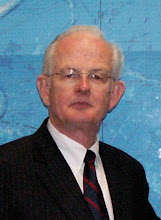This is my one-hundredth post to this blog, and it will be the last regular posting. As future times and circumstances warrant additional writings, they will be forthcoming.
As I began this blog some nineteen months ago, my intent for this enterprise was to establish a written record of my most important thoughts, understanding, and testimony pertaining to the restoration of the Lord’s full gospel and The Church of Jesus Christ of Latter-day Saints in this dispensation. This I have accomplished. As a professional historian, I am well aware of the multitude of records that may follow any individual through subsequent history. However, while an historical record detailing the activities and involvements of an individual is certainly of interest and importance, writings that detail the subject’s beliefs, aspirations, and thoughts are for me personally much more satisfying.
Additionally and speaking primarily to my family both living and yet unborn, these writings are in part my legacy to you. It is important to me that you have an opportunity to understand what I both know and what I believe after a long life of gospel study and religious experiences. To the extent that these writings become of benefit to others, so much the better. There have been certainly other periods in my life when I have spent more concentrated weekly hours in gospel study when preparing to instruct Gospel Doctrine and Institute of Religion classes. However, writing this blog has allowed me to focus on a wide spectrum of specific church and gospel topics as well as related issues like never before.
As I look back over a long life of church activity, there is one impression that overshadows all the rest because of its importance. I was reared in Salt Lake City during the middle of the twentieth century. When I graduated from high school, there were twelve operating temples in the entire world. Today, 160 temples are in operation or are under construction or have been announced. In my youth, temples were places one went to be married and later in life were places where the aging Saints could spend productive time when the rigors of rearing families was largely a thing of their past. Regular temple participation was neither spoken of in church meetings per se nor an activity that families were inclined to plan into their monthly routines. How very different the situation is today, and it needs to be this way for the preservation of the Saints in the Lord’s Church and the well being of the world’s people in general. Rampant personal pride, failed integrity in the family, community, and government as well as the proliferation and flaunting of sexual perversions are obvious signs of the intensifying wickedness in this world as are the increasing numbers of wars, rumors of wars, and incidents of civil disobedience. Can we be living in anything other than the last days?
Temples are portals to heaven. Nowhere on the earth may we be closer to heaven on a consistent, uninterrupted basis. There we are instructed on the finer points of that which we must be and do if we hope to someday be found worthy of the blessing of eternal life. It is there that we may seek inspiration concerning decisions that trouble us, answers to nagging questions, and the comforting balm necessary to endure when troubles and challenges weigh heavily upon us. We learn from the dedicatory prayer offered in the Kirtland Temple [D&C 109], that blessings of direction and strength follow those who participate in temple work regularly, and that these blessings flow outwardly to our families and into our communities to reinforce the Light of Christ that is already a constructive force there. How else do we explain the historical results that followed the dedication and diligent use of the Freiberg Temple in the communist German Democratic Republic? The vast, vast majority of the peoples of this world have no concept of the power and role The Church of Jesus Christ of Latter-day Saints plays in staving off what would otherwise be their destruction resulting from the unbridled and rampant forces of Satan upon the earth. But such is the reality whether they realize it or not.
The writings on this blog have been written prayerfully, and very often, what has been written was the result of inspiration. For what I have learned and experienced these past many months, I am most humbly grateful. I would be remiss if I did not thank Erika, my wife and eternal companion, for her love and support in this endeavor.
